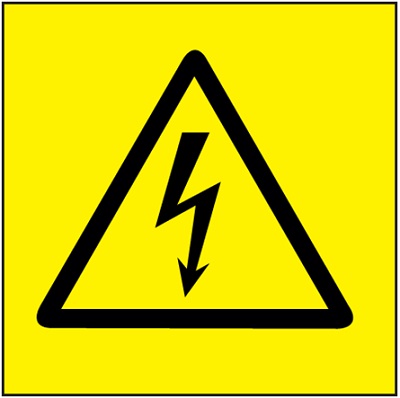
Most of us use electricity every day - it's an easy luxury to take for granted, and in doing so, we often forget just how dangerous electricity can be. As May is Electrical Safety Month, here are a few stories to remind us of exactly what can happen when electricity is misused and safety regulations are ignored:
HGV Driver Electrocuted by Overhead Power Lines
from hse.gov.uk, 12 January 2015
Nigel Fox, a 59-year-old man from Northamptonshire, was tragically killed when the lorry he was driving struck an 11,000 volt power line on a farm in Salisbury. The farm's owner, Tony Slade, was fined £20,000 and ordered to pay costs of £5,609; in a press release, the Health and Safety Executive stated that "Mr Slade had made no attempt to remove or reduce the serious risk associated with the power line crossing the yard", going on to suggest that Slade should have considered "diverting the cable or providing signs or barriers to warn visitors of its existence".
Apprentice Electrician Killed by Exposed Electrical Bars
from rochdaleonline.co.uk, 22 April 2015
Nathan Brown, a 19-year-old apprentice electrician from Rochdale, was testing a set of lights when he came into contact with an unprotected set of busbars and received a lethal electric shock. The shock sent Brown falling head-first onto a roof below, but a pathologist stated that he "probably suffered a cardiac arrest before falling to the ground" - that is, he was killed by the electricity, not by the fall. Brown had been working with his father David, who in the aftermath of the accident made this statement: "As far as I am aware the busbar should have been marked up in a sleeve with the marking 'danger high voltage'. I have never come across a busbar not sleeved and marked with an appropriate sign."
Bradford Man Hospitalised After Using Unsafe Testing Equipment
from hse.gov.uk, 24 January 2014
An unnamed 22-year-old from Bradford needed skin grafts on both hands after touching an exposed conductor and receiving a 415 volt electric shock. The conductors were part of some testing equipment that the man was using to test a transformer; his employer, Wilson Power Solutions Ltd, was fined £6,500 for giving the trainee "unsafe, inappropriate and poorly maintained equipment to test an electrical transformer with no training or supervision".
So, how can you prevent accidents like these in your workplace?
- Use appropriate warning signs
- Keep electrical equipment in good condition
- Before allowing an employee to work with electricity, ensure that he/she is properly trained to do so
Do you have something to say about electrical safety? Join our #ElectricalSafetyMonth conversation on Twitter.